 HarperCollins Publishers
HarperCollins Publishers
Westerhill Road
Bishopbriggs
Glasgow
G64 2QT
Great Britain Third Edition 2011 Reprint 10 9 8 7 6 5 4 3 2 1 0 HarperCollins Publishers 2005, 2007, 2011 EPUB Edition July 2011 ISBN 978-0-00-744470-0 Collins is a registered trademark of HarperCollins Publishers Limited www.collinslanguage.com A catalogue record for this book is available from the British Library Typeset by Davidson Publishing Solutions, Glasgow Printed in India by
Gopsons Papers Ltd SERIES EDITOR
Rob Scriven MANAGING EDITOR
Galle Amiot-Cadey PROJECT CO-ORDINATOR
Susanne Reichert CONTRIBUTOR
Horst Kopleck We would like to give special thanks to Simone Conboy, Foreign Languages Consultant, for all her advice on teaching practice in todays classroom. Her contribution has been invaluable in the writing of this book. Acknowledgements
We would like to thank those authors and publishers who kindly gave permission for copyright material to be used in the Collins Word Web. We would also like to thank Times Newspapers Ltd for providing valuable data. All rights reserved under International and Pan-American Copyright Conventions. By payment of the required fees, you have been granted the non-exclusive, non-transferable right to access and read the text of this e-book on screen.
No part of this text may be reproduced, transmitted, downloaded, decompiled, reverse engineered, or stored in or introduced into any information storage and retrieval system, in any form or by any means, whether electronic or mechanical, now known or hereinafter invented, without the express written permission of HarperCollins. Entered words that we have reason to believe constitute trademarks have been designated as such. However, neither the presence nor absence of such designation should be regarded as affecting the legal status of any trademark. HarperCollins does not warrant that www.collinsdictionary.com, www.collinslanguage.com or any other website mentioned in this title will be provided uninterrupted, that any website will be error free, that defects will be corrected, or that the website or the server that makes it available are free of viruses or bugs. For full terms and conditions please refer to the site terms provided on the website. FOREWORD FOR LANGUAGE TEACHERS The Easy Learning German Grammar is designed to be used with both young and adult learners, as a group reference book to complement your course book during classes, or as a recommended text for self-study and homework/coursework.
The text specifically targets learners from ab initio to intermediate or GCSE level, and therefore its structural content and vocabulary have been matched to the relevant specifications up to and including Higher GCSE. The approach aims to develop knowledge and understanding of grammar and to improve the ability of learners to apply it by:
- defining parts of speech at the start of each major section, with examples in English to clarify concepts
- minimizing the use of grammar terminology and providing clear explanations of terms both within the text and in the Glossary
- illustrating all points with examples (and their translations) based on topics and contexts which are relevant to beginner and intermediate course content
The text helps you develop positive attitudes to grammar learning in your classes by:
- giving clear, easy-to-follow explanations
- prioritizing content according to relevant specifications for the levels
- sequencing points to reflect course content, e.g. verb tenses
- highlighting useful Tips to deal with common difficulties
- summarizing Key points at the end of sections to consolidate learning
In addition to fostering success and building a thorough foundation in German grammar, the optional
Grammar Extra sections will encourage and challenge your learners to further their studies to higher and advanced levels. INTRODUCTION FOR STUDENTS Whether you are starting to learn German for the very first time, brushing up on topics you have studied in class, or revising for your GCSE exams, the
Easy Learning German Grammar is here to help. This easy-to-use guide takes you through all the basics you will need to speak and understand modern, everyday German. Newcomers can sometimes struggle with the technical terms they come across when they start to explore the grammar of a new language.
The Easy Learning German Grammar explains how to get to grips with all the parts of speech you will need to know, using simple language and cutting out jargon. The text is divided into sections, each dealing with a particular area of grammar. Each section can be studied individually, as numerous cross-references in the text point you to relevant points in other sections of the book for further information. Every major section begins with an explanation of the area of grammar covered on the following pages. For quick reference, these definitions are also collected together on pages xxiv in a glossary of essential grammar terms.  Each grammar point in the text is followed by simple examples of real German, complete with English translations, helping you understand the rules.
Each grammar point in the text is followed by simple examples of real German, complete with English translations, helping you understand the rules.  Each grammar point in the text is followed by simple examples of real German, complete with English translations, helping you understand the rules.
Each grammar point in the text is followed by simple examples of real German, complete with English translations, helping you understand the rules.
Underlining has been used in examples throughout the text to highlight the grammatical point being explained. 
 If you are talking about a part of your body, you usually use a word like my or his in English, but in German you usually use the definite article.
If you are talking about a part of your body, you usually use a word like my or his in English, but in German you usually use the definite article.
| Er hat sich das Bein gebrochen. | Hes broken his leg. |
| Sie hat sich die Hnde schon | Shes already washed her |
| gewaschen. | hands. |
In German, as with any foreign language, there are certain pitfalls which have to be avoided.
Tips and
Information notes throughout the text are useful reminders of the things that often trip learners up.
 Tip
Tip Use
Sie in more formal situations for both singular and plural
you.
 Key points
Key points
With masculine singular nouns in the nominative

use
ein .

With feminine singular nouns in the nominative
 Next page
Next page
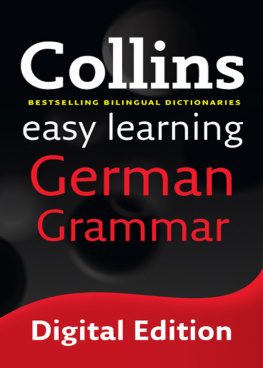
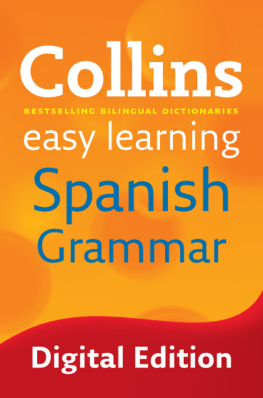

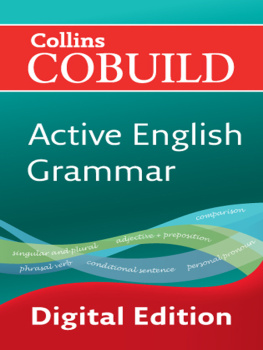

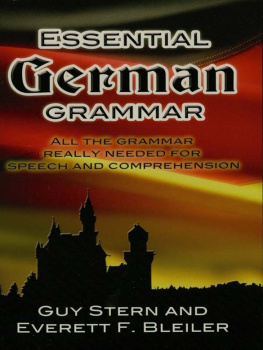
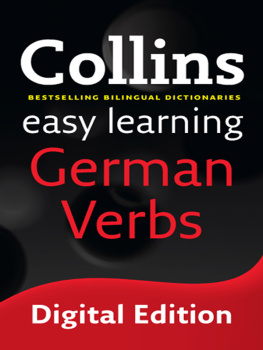

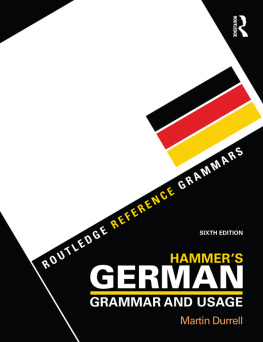



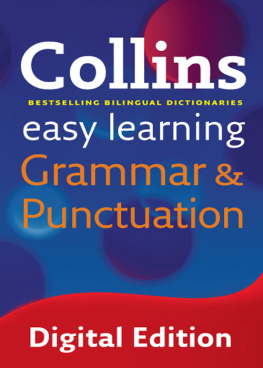
 HarperCollins Publishers
HarperCollins Publishers Each grammar point in the text is followed by simple examples of real German, complete with English translations, helping you understand the rules.
Each grammar point in the text is followed by simple examples of real German, complete with English translations, helping you understand the rules.  If you are talking about a part of your body, you usually use a word like my or his in English, but in German you usually use the definite article.
If you are talking about a part of your body, you usually use a word like my or his in English, but in German you usually use the definite article. With masculine singular nouns in the nominative
With masculine singular nouns in the nominative  use ein .
use ein .